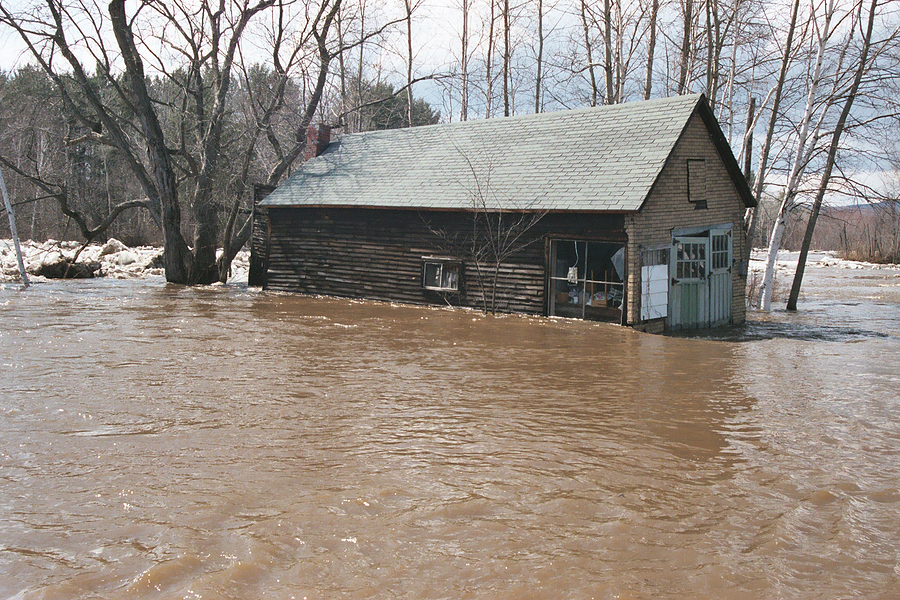Major U.S. insurers jostled on Capitol Hill this week over control of 800,000 former State Farm flood insurance policies as lawmakers tried to advance reform of the nation’s flood insurance system.
The conflict began last year when State Farm dropped out of the government’s flood insurance program, leaving behind 800,000 existing policies. That was equal to almost 15 percent of the $3.3-billion flood insurance market.
Competitors of State Farm want to be able to take over the policies, but State Farm has an arrangement with the government that shields them. Congress will have to decide what to do.
The struggle over the policies pits State Farm against Fidelity National, Allstate, The Hartford , Travelers and other insurance giants in a struggle that is chiefly about access to policy-holders.
It also highlights the distractions lawmakers face when trying to reform troubled government programs mired in commercial conflicts, with companies vying for competitive advantage through lobbying rather than on an open market.
As lawmakers and lobbyists maneuvered, flood waters were rolling down the Mississippi valley and hurricane season was set to start on June 1, with the National Flood Insurance Program (NFIP) deep in debt and no consensus on fixing it.
Reform legislation is in the works. It has been approved by a U.S. House of Representatives subcommittee, but it faces obstacles, such as the fight over the policies.
The job of cutting through such complications will fall to Representative Judy Biggert — the reform bill’s chief backer and the chairman of the House insurance subcommittee that approved it — as well as other House Republicans.
Biggert is staying neutral for now on the State Farm issue. “Her primary interest remains … a reauthorization bill that will put the NFIP back on a secure financial footing and protect taxpayers,” said Biggert’s spokesman.
Flood insurance is not a highly profitable segment of the insurance business, but people who buy it may be willing to bundle in their home, auto and other more lucrative insurance lines. Hence, the struggle over the 800,000 policies.
FEMA RUNS PROGRAM
The NFIP covers more than 5.6 million property owners against floods, the most common of U.S. natural disasters. Typical home insurance policies do not cover flood damage.
The program is run by the Federal Emergency Management Agency, or FEMA. Most flood policies are marketed, sold and written on FEMA’s behalf, for a fee, by 85 private insurance firms. The premiums paid by policy-holders go to FEMA, which pools them and pays out on claims as needed.
In addition to the part of the NFIP that involves the private insurers, FEMA has a small in-house operation, known as NFIP Direct, that it has traditionally used for dealing with problematic policies unwanted by private firms.
The NFIP has been in trouble since 2005, when it was inundated with claims from Hurricane Katrina. A $17.8-billion taxpayer bailout of the program followed, as did a series of investigations, studies and congressional hearings.
In the post-Katrina uproar, Congress’ support for the NFIP has wavered and, on several occasions, the program has come close to expiring or been allowed to expire before lawmakers voted to renew it, frustrating insurers and real estate interests who count on the NFIP.
State Farm, once the nation’s No. 2 writer of flood insurance, left the program in June 2010, citing its “stop/start” uncertainties. It was the largest pull-out in the program’s 42-year history. Faced with 800,000 stranded policies, FEMA decided to put them in its NFIP Direct operation, instead of letting other insurers take them over.
FEMA’s move, implemented over a one-year transition, minimized confusion for policy-holders and preserved a role for independent State Farm agents in selling flood policies.
But it also protected State Farm from competitors, while vastly expanding NFIP Direct, well beyond its original purpose, according to insurers who now want a change.
CLEAVER AMENDMENT
As debate on NFIP reform progressed last month, Democratic Representative Emanuel Cleaver offered an amendment to Biggert’s bill that would have opened the door for other insurers to snatch up the State Farm policies.
Through an auction, or some other process, Cleaver proposed moving the policies out of NFIP Direct and into a pool where other companies could have a crack at them.
“It’s a bit concerning that some parties would go after these policies by attempting to influence federal legislation,” State Farm spokesman Phil Supple told Reuters.
Cleaver withdrew his amendment at Biggert’s request, and its outlook was unclear. State Farm agents were said to be complaining about the amendment to lawmakers, but it still has some support, said aides and lobbyists.
“We urge Congress to adopt measures that will encourage more policies to be administered by the private market and preserve the NFIP Direct program’s original function that handles only complex risks and repetitive losses,” said Ben McKay, a lobbyist for the Property Casualty Insurers Association of America, an industry group.
McKay’s group and others were pushing to put the former State Farm policies up for grabs. Other insurers with an interest in the struggle over the policies, and in the larger reform of the program, include Liberty Mutual, Southern Farm Bureau, and Harleysville Group.
FEMA declined to comment on the pending legislation.
The NFIP is scheduled to expire again in September.
(Reporting by Kevin Drawbaugh; Editing by Tim Dobbyn)
Topics USA Carriers Legislation Flood FEMA State Farm
Was this article valuable?
Here are more articles you may enjoy.



 Is the AI Boom a Bubble Waiting to Pop? Here’s What History Says
Is the AI Boom a Bubble Waiting to Pop? Here’s What History Says  Litigation Funding, Other New Laws in SE States Could Impact Liability Insurance
Litigation Funding, Other New Laws in SE States Could Impact Liability Insurance  Howden Buys M&A Insurance Broker Atlantic Group in US Expansion
Howden Buys M&A Insurance Broker Atlantic Group in US Expansion  ’60 Minutes’ Homeowners Ask Court to Force DFS to Divulge Heritage Probe Info
’60 Minutes’ Homeowners Ask Court to Force DFS to Divulge Heritage Probe Info 

